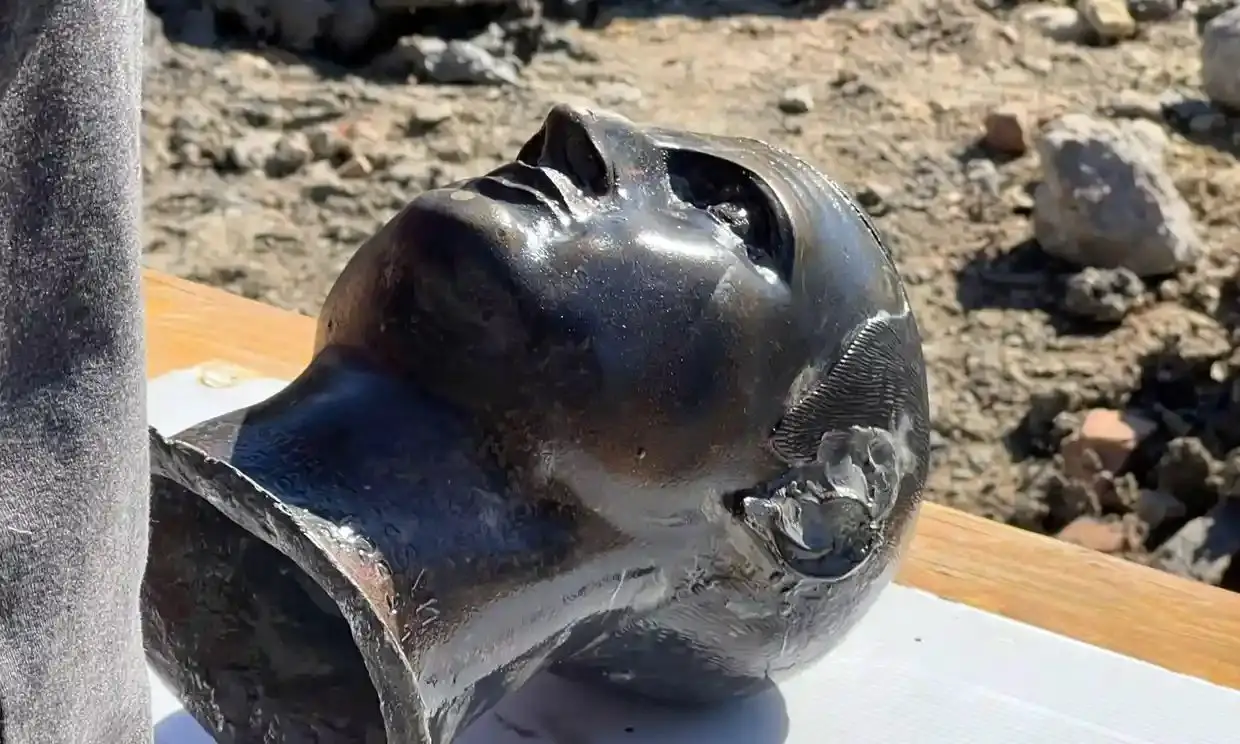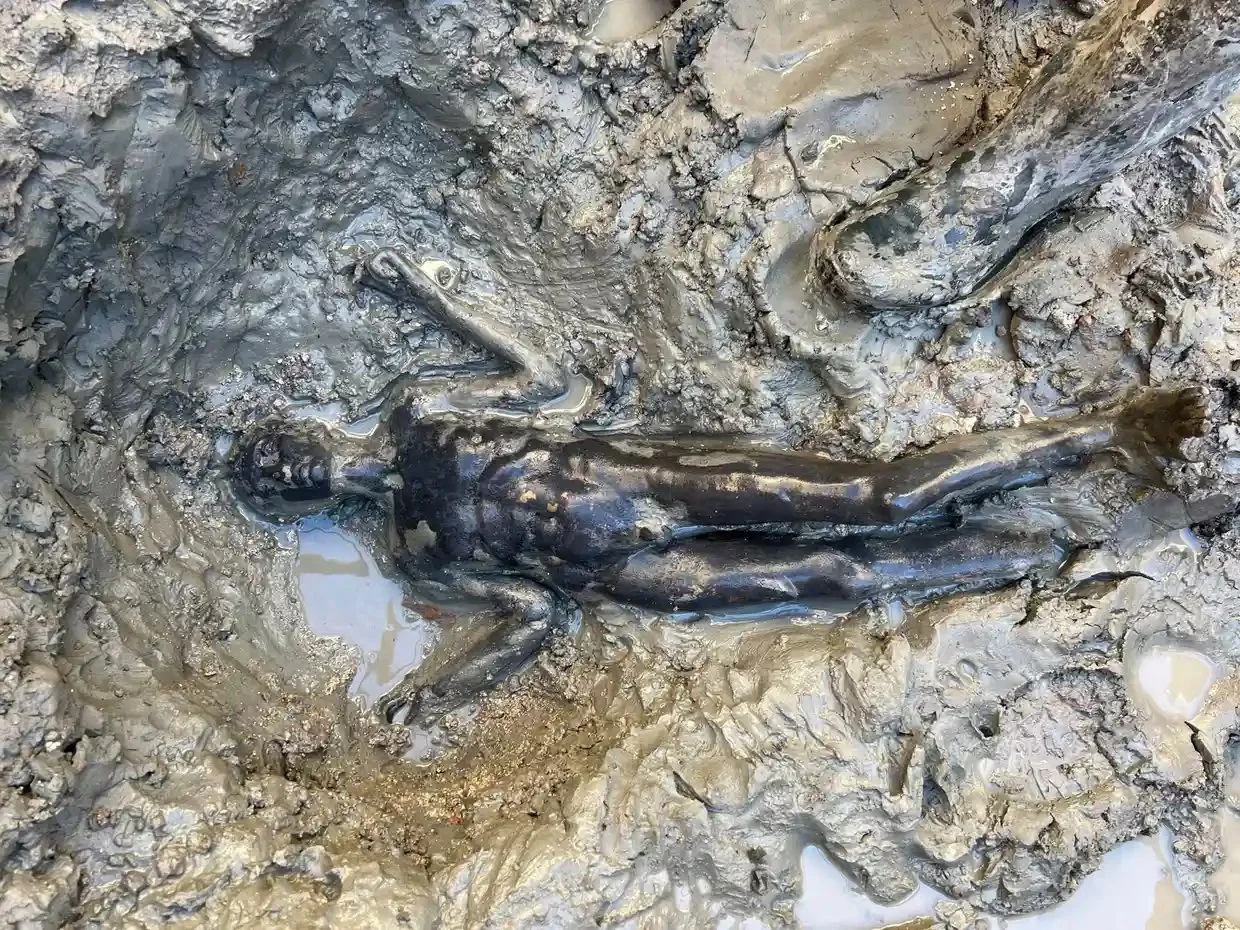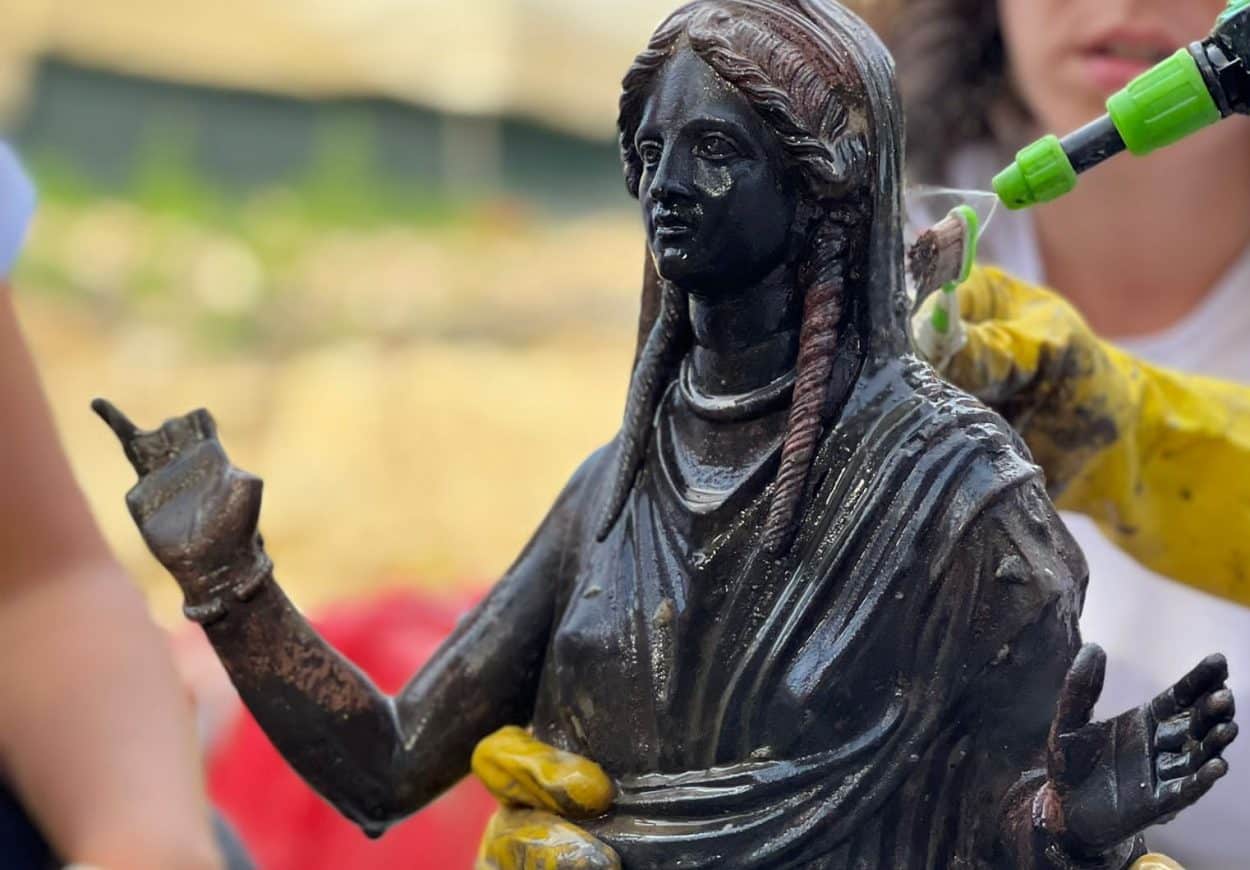An ornate collection of statues from the Etruscan – Roman transition period has been discovered in an ancient spa in Tuscany.
Archaeologists from the Universita per Stranieri di Siena were excavating a network of bath houses in San Casciano dei Bagni, near Siena, when they uncovered the statues preserved in layers of mud beneath pools of thermal water.
The site is fed by geothermal springs, which the Etruscans used to supply water at a mean temperature of 42 °C (108 °F) to the complex of Balnea Clusinae.
According to legend, the site was founded by Porsenna, an Etruscan king of Chiusi, although archaeologists suggest that the complex was built by the Etruscans in the third century BC.

During the Roman period, the spa became a popular attraction for the therapeutic benefits due to the rich content of calcium and magnesium in the water, with notable figures such as Caesar Augustus being a frequent visitor. At some point during the 5th century AD, the pools were sealed with heavy stone pillars, leaving the statues in a preserved state.
After removing the pillars, archaeologists uncovered 24 statues that date from around 2,300-years-ago. The most notable is a sleeping ephebe lying next to Hygeia, a goddess from Greek, as well as Roman, mythology, who is associated with health, cleanliness and hygiene (her name is the source for the word “hygiene”).
The team also found a statue of Apollo, and statues depicting matrons, children and emperors, as well as thousands of coins. An initial analysis suggests that the statues were locally crafted during the 2nd and 1st century BC, and were likely deposited in the pools along with votive offerings in dedication to the gods.

Jacopo Tabolli from the Universita per Stranieri di Siena said: “It is the greatest store of statues from ancient Italy and is the only one whose context we can wholly reconstruct”.
Upon further analysis and preservation, the artefacts will be moved to a 16th-century building recently bought by the culture ministry in the town of San Casciano, while the spa complex will be developed into an archaeological park.
Universita per Stranieri di Siena
Header Image Credit : Jacopo Tabolli/Universita per Stranieri di Siena





